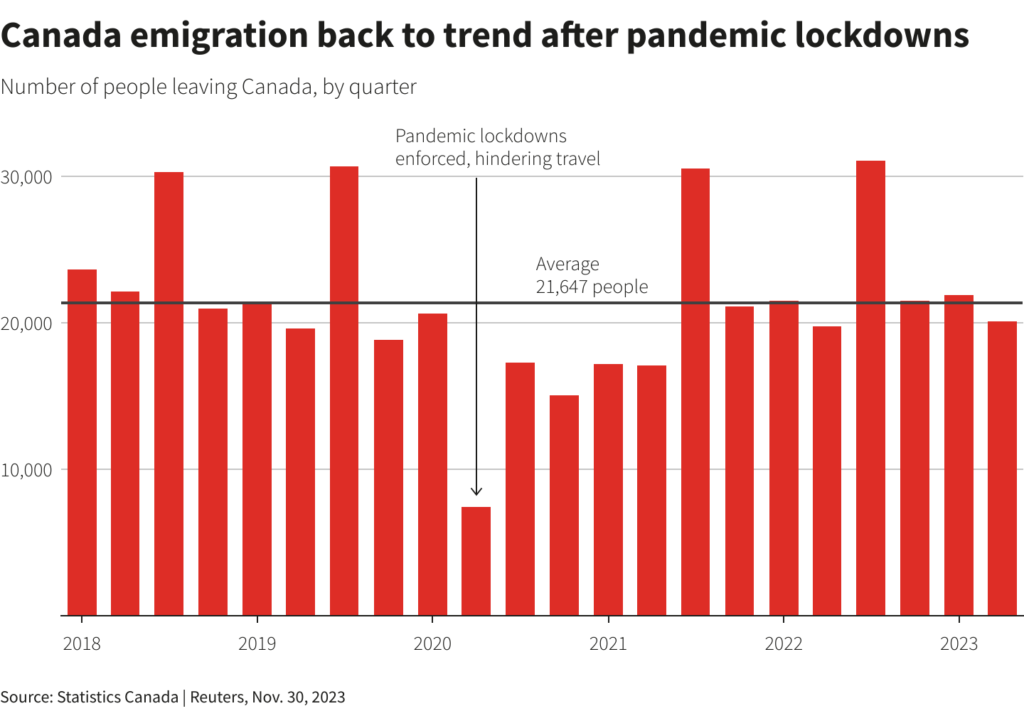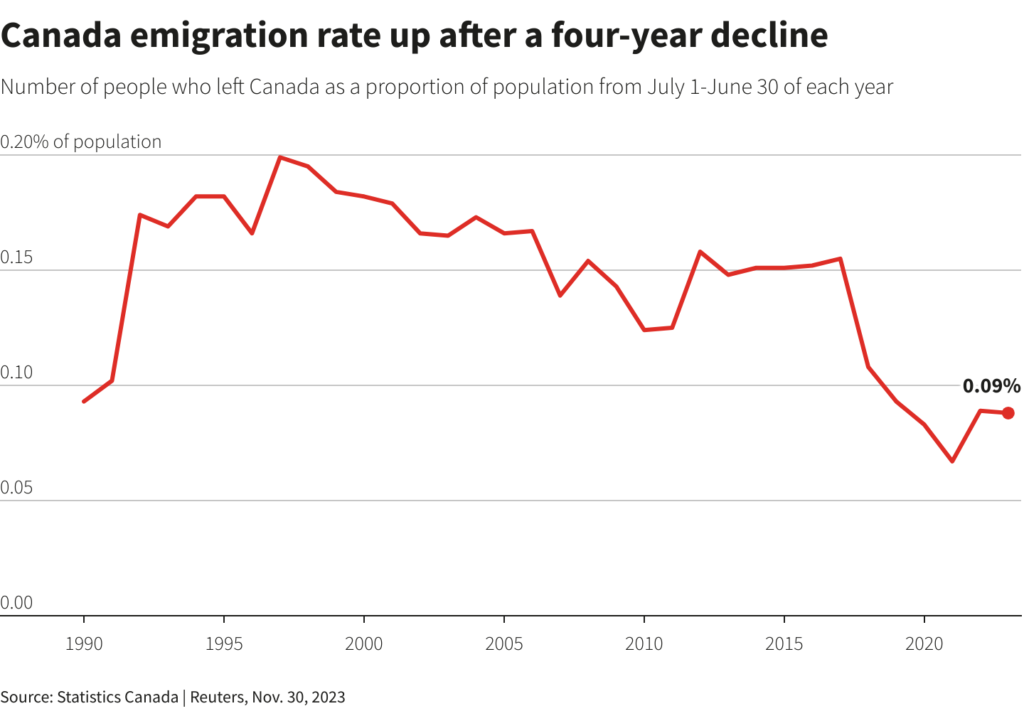How Canada’s Rising Expenses Drive Reverse Migration
In recent years, Canada has emerged as a beacon for immigrants seeking stability, opportunity, and a high quality of life. However, beneath its welcoming facade lies a growing concern: the surging cost of living that’s triggering a reverse immigration trend. Once revered for its affordable healthcare, quality education, and economic prospects, Canada now faces a conundrum as the cost of essentials skyrockets, prompting some residents and immigrants alike to consider leaving.
Cost of Living Surge
The escalating cost of housing has been a primary driver of this shift. Cities like Toronto and Vancouver, known for their vibrancy and economic opportunities, have become increasingly unaffordable. The dream of homeownership, once attainable for many, now appears out of reach for a significant portion of the population. Rent prices have soared, making it challenging for young professionals and families to secure suitable accommodations within their budgets.
Moreover, everyday expenses, including groceries, transportation, and childcare, have witnessed steady hikes, exacerbating the financial strain on individuals and families. The pandemic-induced economic disruptions further catalyzed inflationary pressures, amplifying the struggles for those already grappling with the high cost of living.
Impact on Immigration Trends
Traditionally heralded as a destination for immigrants seeking stability and prosperity, Canada’s allure is now shadowed by its affordability crisis. The reverse immigration trend, where individuals and families are contemplating leaving the country or moving to less expensive regions, is becoming increasingly noticeable.
Skilled immigrants, once drawn by Canada’s robust job market and promises of a better life, are reconsidering their choices as the cost of living erodes the financial benefits they sought. This trend poses a substantial risk to Canada’s ability to attract and retain talent, potentially affecting its long-term economic growth and innovation.
Government Responses and Challenges
The Canadian government has taken steps to address the housing crisis and mitigate the rising costs. Initiatives to increase affordable housing stock, implement foreign buyer taxes, and introduce measures to cool the real estate market have been put into action. However, the impact of these initiatives might take time to be felt and might not fully alleviate the burden for those struggling with day-to-day expenses.
Balancing economic growth and affordability remains a complex challenge. While Canada continues to strive for a prosperous economy, ensuring that this growth is inclusive and sustainable for all residents—both long-standing and newly arrived—is critical.
Looking Ahead
As Canada grapples with these challenges, a reevaluation of its attractiveness as an immigrant-friendly nation is underway. The narrative of the ‘land of opportunities’ is evolving, and the country faces the task of recalibrating its image to align with the lived experiences of its residents.
Addressing the affordability crisis requires multifaceted solutions that encompass housing reforms, income equality measures, and targeted policies to support vulnerable communities. Simultaneously, promoting economic opportunities beyond the metropolitan hubs and investing in diverse sectors could decentralize the concentration of population and economic activity.
Canada‘s journey to tackle its surging cost of living and reverse immigration trend demands a delicate balance between sustaining economic growth and ensuring an affordable, inclusive society. The steps taken today will shape the nation’s future and its standing on the global stage as a destination of choice for individuals seeking a better life.



